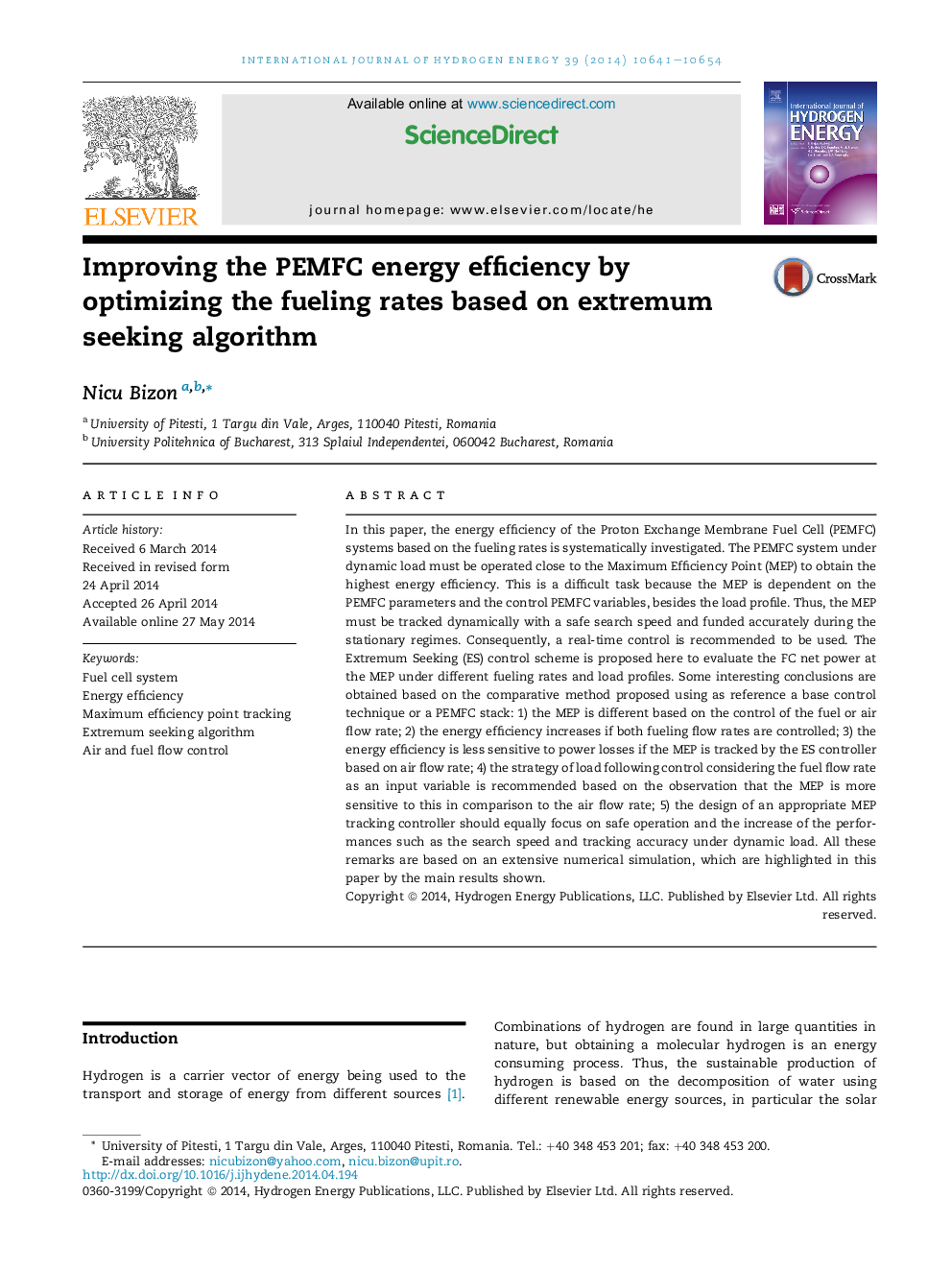| Article ID | Journal | Published Year | Pages | File Type |
|---|---|---|---|---|
| 1276190 | International Journal of Hydrogen Energy | 2014 | 14 Pages |
•The maximum efficiency point (MEP) is tracked based on fueling rates.•The energy efficiency increases if both fueling rates are controlled.•The MEP is less sensitive to power losses if the air flow rate is optimal tracked.•The strategy of load following control-fuel based is more efficient.•The control design is equally focused on safe operation and performances.
In this paper, the energy efficiency of the Proton Exchange Membrane Fuel Cell (PEMFC) systems based on the fueling rates is systematically investigated. The PEMFC system under dynamic load must be operated close to the Maximum Efficiency Point (MEP) to obtain the highest energy efficiency. This is a difficult task because the MEP is dependent on the PEMFC parameters and the control PEMFC variables, besides the load profile. Thus, the MEP must be tracked dynamically with a safe search speed and funded accurately during the stationary regimes. Consequently, a real-time control is recommended to be used. The Extremum Seeking (ES) control scheme is proposed here to evaluate the FC net power at the MEP under different fueling rates and load profiles. Some interesting conclusions are obtained based on the comparative method proposed using as reference a base control technique or a PEMFC stack: 1) the MEP is different based on the control of the fuel or air flow rate; 2) the energy efficiency increases if both fueling flow rates are controlled; 3) the energy efficiency is less sensitive to power losses if the MEP is tracked by the ES controller based on air flow rate; 4) the strategy of load following control considering the fuel flow rate as an input variable is recommended based on the observation that the MEP is more sensitive to this in comparison to the air flow rate; 5) the design of an appropriate MEP tracking controller should equally focus on safe operation and the increase of the performances such as the search speed and tracking accuracy under dynamic load. All these remarks are based on an extensive numerical simulation, which are highlighted in this paper by the main results shown.
